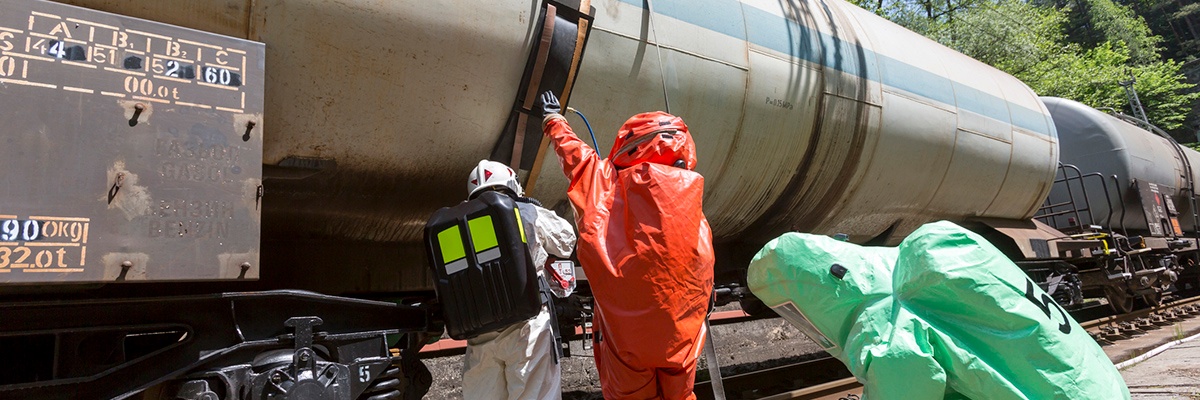
There may be a time in which a hazardous materials emergency is taking place near you. There are certain things that will enable our responders to conduct their jobs more easily and certain things that, if adhered to, will help keep you and your families safe.
The identification of hazardous materials can help save valuable time when an emergency is occurring. Fortunately, there are several ways in which to possibly identify hazardous materials. Generally speaking, all trucks, trains, and automobiles carrying equal to or greater than 1,000 pounds of a hazardous material must be placarded. A placard is a four-sided diamond that will contain a 4-digit identification number and potentially a single digit hazard class. These numbers can be invaluable to a first responder who is attempting to identify a material that may have spilled.
Safety Data Sheets (SDSs) are an important document for worker safety. SDSs contain basic procedures for handling, working, and cleaning hazardous materials that are found in commerce and in the workplace. The new global harmonized system dictates specific sections that must be included on all SDSs including: hazard identification, composition, first aid, firefighting procedures, accidental release procedures, proper handling, personal protection, physical & chemical properties, stability & reactivity, and toxicological information. To learn more about safety data sheets and the global harmonized system please visit the Occupational Safety and Health Administration website devoted to the matter.
During an emergency it may be necessary for public safety personnel to issue orders to either shelter in place or to evacuate to a safer area. It is important to trust in your senses; if you smell an unusual strong chemical odor it may mean that it's time to shelter in place. Generally speaking, sheltering in place is the best method for quickly protecting you and your family during hazardous materials incidents. Sheltering in place only requires a few simple steps and can be performed in virtually any home, vehicle, or place of business. The steps that should be followed include: going indoors (or into a vehicle), closing all windows and doors and turning off any ventilation systems.
Most chemical releases do not necessitate evacuations. However, evacuations may be ordered if the release is of a particularly toxic, reactive, or flammable chemical. If an evacuation is ordered by local police or fire personnel you should quickly pack only what you need and follow the directions of local officials regarding safe passage.